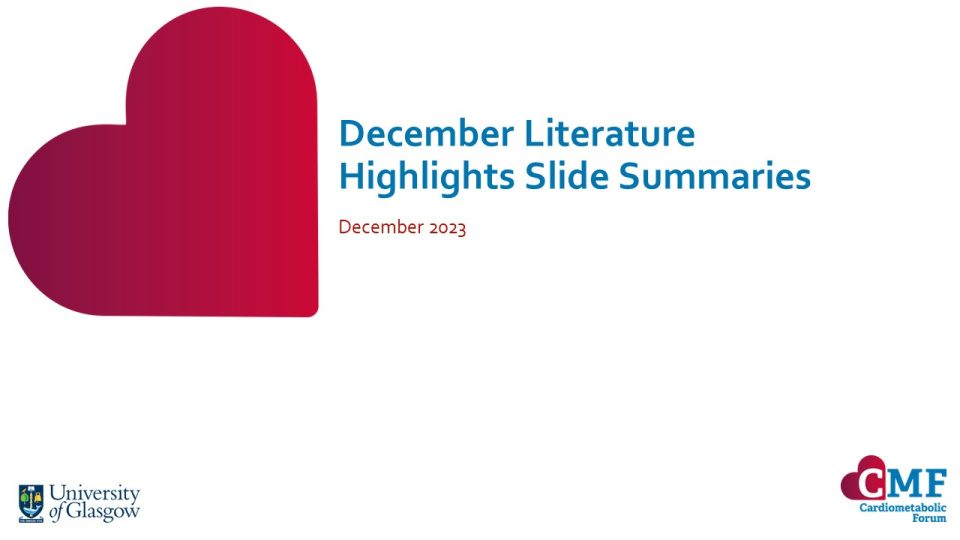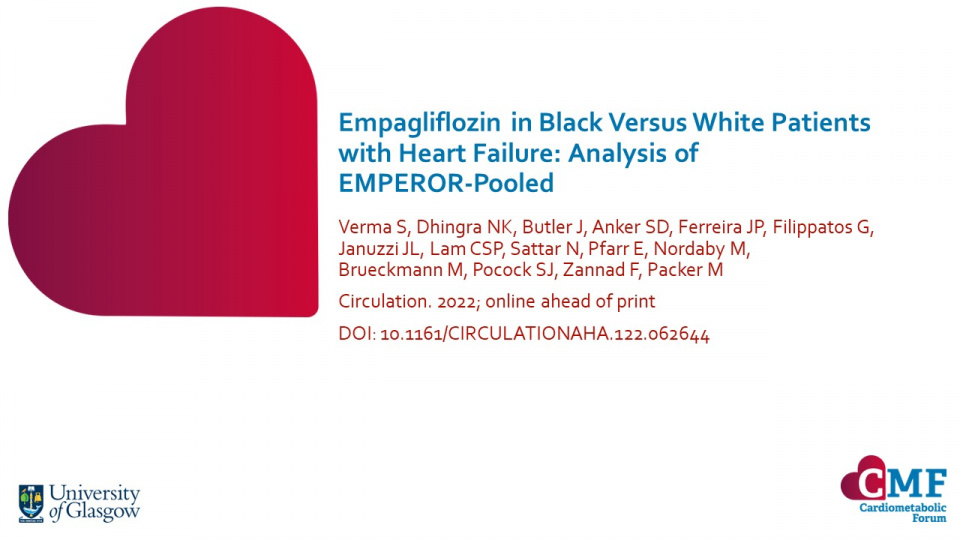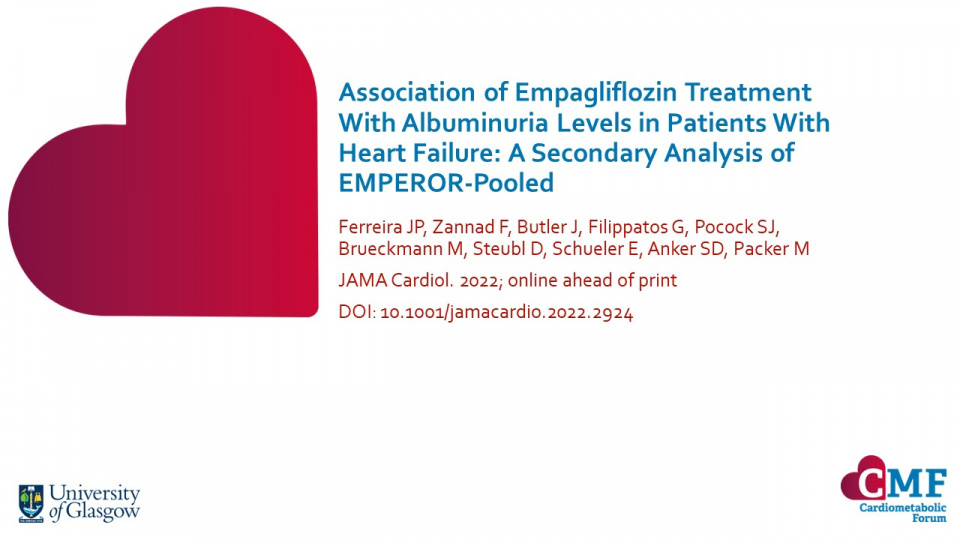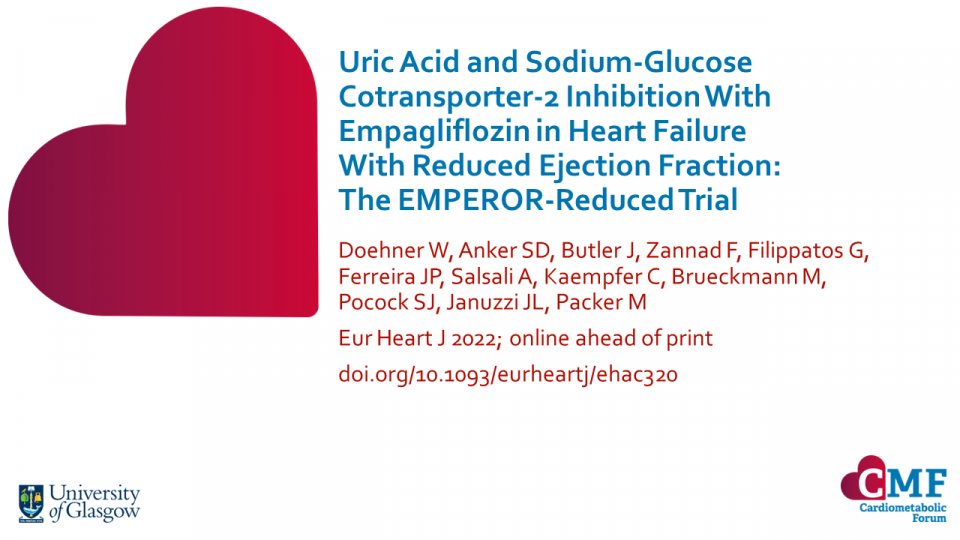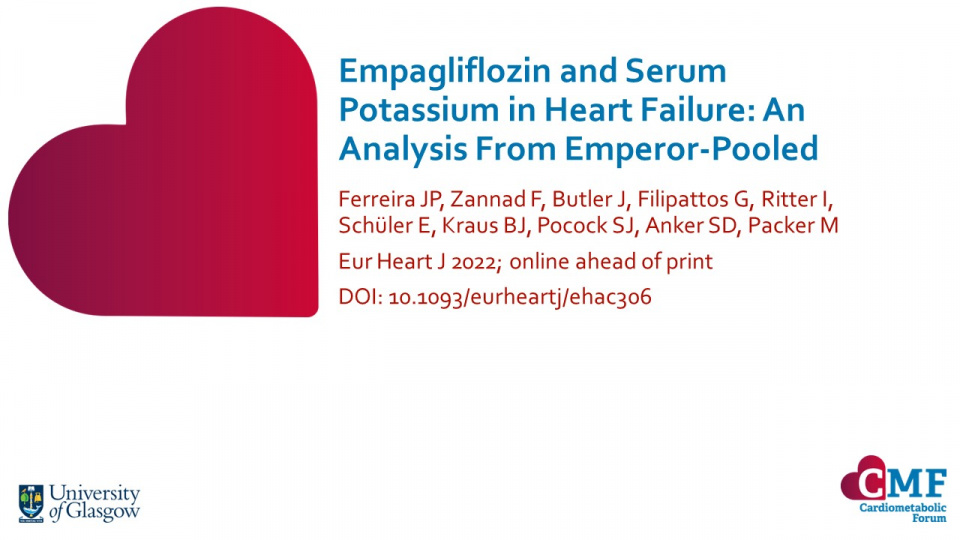Publications
Stay up to date with our literature reviews which are curated by experts to feature the most important publications released each month. Explore our publications for access to concise summary slides for your own use.
Empagliflozin in Black Versus White Patients with Heart Failure: Analysis of EMPEROR-Pooled
Circulation. 2022; online ahead of print DOI: 10.1161/CIRCULATIONAHA.122.062644
While analyses from DAPA-HF and EMPEROR-Reduced demonstrated a consistent benefit of SGLT2i in Black patients, data were limited to HFrEF and included a small number of Black patients. In the current analysis, the efficacy and safety of empagliflozin according to Black vs White race in the Americas was assessed across the spectrum of EF in EMPEROR-Pooled, a combined dataset from both EMPEROR trials.
Keywords:
Effects of Empagliflozin on Cardiovascular and Renal Outcomes in Heart Failure with Reduced Ejection Fraction According to Age: a Secondary Analysis of EMPEROR-Reduced
Eur J Heart Fail. 2022; online ahead of print DOI: 10.1002/ejhf.2707
Results from EMPEROR-Reduced demonstrated that empagliflozin improved CV and renal outcomes in patients with HFrEF, but its efficacy and safety across patient's age is not well established.
Keywords:
Efficacy of Empagliflozin in Heart Failure with Preserved versus Mid-range Ejection Fraction: a Pre-specified Analysis of EMPEROR-Preserved
Nat Med. 2022;28:2512–2520 DOI: 10.1038/s41591-022-02041-5
Results from EMPEROR-Preserved demonstrated that empagliflozin improved CV death and HF hospitalisation – the primary outcome – in patients with HF and LVEF >40%. This pre-specified analysis of EMPEROR-Preserved aimed to evaluate the effect of empagliflozin in patients with HFpEF (LVEF ≥50%) compared with patients who had HFmrEF (LVEF 41–49%).
Keywords:
Association of Empagliflozin Treatment With Albuminuria Levels in Patients With Heart Failure: A Secondary Analysis of EMPEROR-Pooled
JAMA Cardiol. 2022; online ahead of print DOI: 10.1001/jamacardio.2022.2924
In a post-hoc analysis of EMPEROR-Pooled, empagliflozin was associated with a reduction in the primary outcome irrespective of albuminuria levels at baseline compared with placebo, and there was reduced progression to macroalbuminuria and reversion of macroalbuminuria.
Uric Acid and Sodium-Glucose Cotransporter-2 Inhibition With Empagliflozin in Heart Failure With Reduced Ejection Fraction: The EMPEROR-Reduced Trial
Eur Heart J 2022; online ahead of print doi.org/10.1093/eurheartj/ehac320
Hyperuricaemia is common in heart failure (HF) and is an independent predictor of advanced disease severity and increased mortality. This analysis from EMPEROR-Reduced showed that empagliflozin induced a rapid and sustained reduction of both serum uric acid (SUA) and of clinical events related to hyperuricaemia.
Empagliflozin and Serum Potassium in Heart Failure: An Analysis From Emperor-Pooled
Eur Heart J 2022; online ahead of print DOI: 10.1093/eurheartj/ehac306
In this pooled analysis, empagliflozin reduced the incidence of hyperkalaemia without significant increase in hypokalaemia.
Potassium is essential for normal cellular function, but severe potassium abnormalities can lead to cardiac arrhythmias and death. Hyperkalaemia frequently leads to interruption and discontinuation of neurohormonal antagonists, which may worsen the prognosis for people with heart failure (HF).
Empagliflozin in the Treatment of Heart Failure With Reduced Ejection Fraction in Addition to Background Therapies and Therapeutic Combinations (EMPEROR-Reduced): A Post-hoc Analysis of a Randomised, Double-blind Trial
Lancet Diabetes Endocrinol 2022;10:35–45 doi.org/10.1016/S2213-8587(21)00292-8
The data from the trial suggests that empagliflozin may be considered as a foundational therapy in heart failure with reduced ejection fraction. This post-hoc analysis of EMPEROR-Reduced – a randomised, double-blind, parallel-group trial – by Verma et al. evaluated the efficacy and safety of empagliflozin in patients with heart failure with reduced ejection fraction and to baseline treatment.

